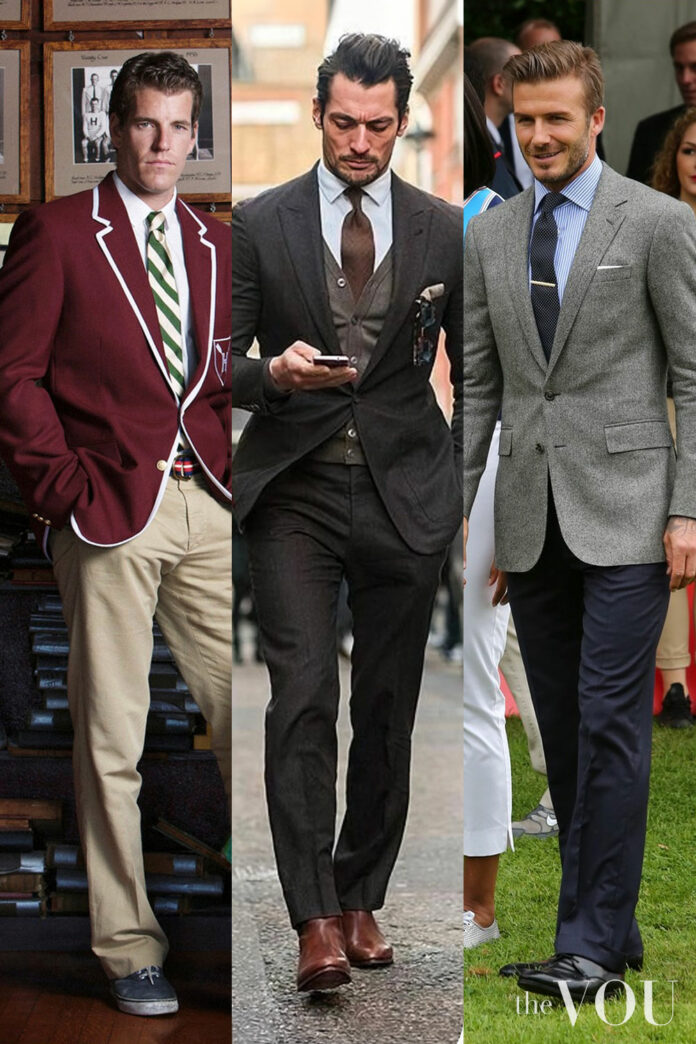When you shop at a department store or large clothing retailer, you’ll often see any tailored jacket for sale listed as a “blazer.”
But not every jacket with lapels and buttons can accurately bear this name!
To understand the differences between blazers, suit jackets, and sport coats, we must delve into each type of garment’s unique characteristics, history, and appropriate occasions.
By the end of this article, you’ll be equipped with the expertise to identify all types of men’s tailored jackets and select the perfect one for any situation, ensuring you always present yourself as a well-dressed gentleman.
The Blazer
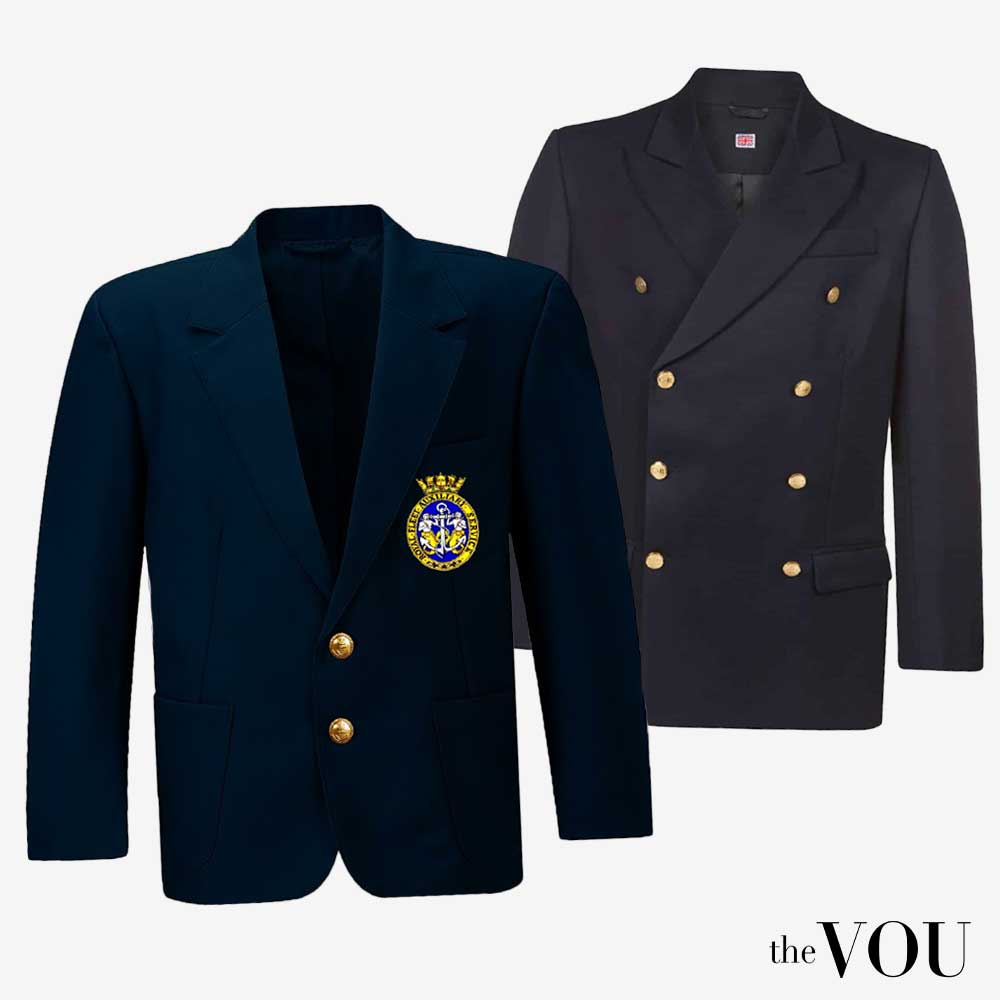
Technically, a blazer is the most specific of the three jacket types–and also the rarest–because it has to fulfil particular criteria.
For example, a blazer can be solid (mostly navy blue) or incorporate features like contrast piping or a striped pattern. These are often called “boating blazers” or “regatta blazers.”
All other patterns, speaking most technically, disqualify a jacket from being a blazer.
Wool, cotton, and linen are common materials for blazers, depending on the season and desired level of formality.
Blazers exist somewhere between suit jackets and sport coats; like the latter, they are single pieces worn with differently coloured pants.
However, traditional blazers are true to their British tailoring origins. They are more formal than a sport coat and possess the structural components of a suit jacket with a more padded shoulder.
Nevertheless, you can also find less-structured blazers (influenced by Italian style), which venture into sport-coat territory.
Notable Blazer Crests, Colours, and Patterns
A crest is a typical ornamentation on a blazer; it showcases its origins and identifies the wearer as part of an organisation, such as a school or a club.
With intricate designs and meaningful symbols, crests reflect the family or institution’s rich history, traditions, and values.
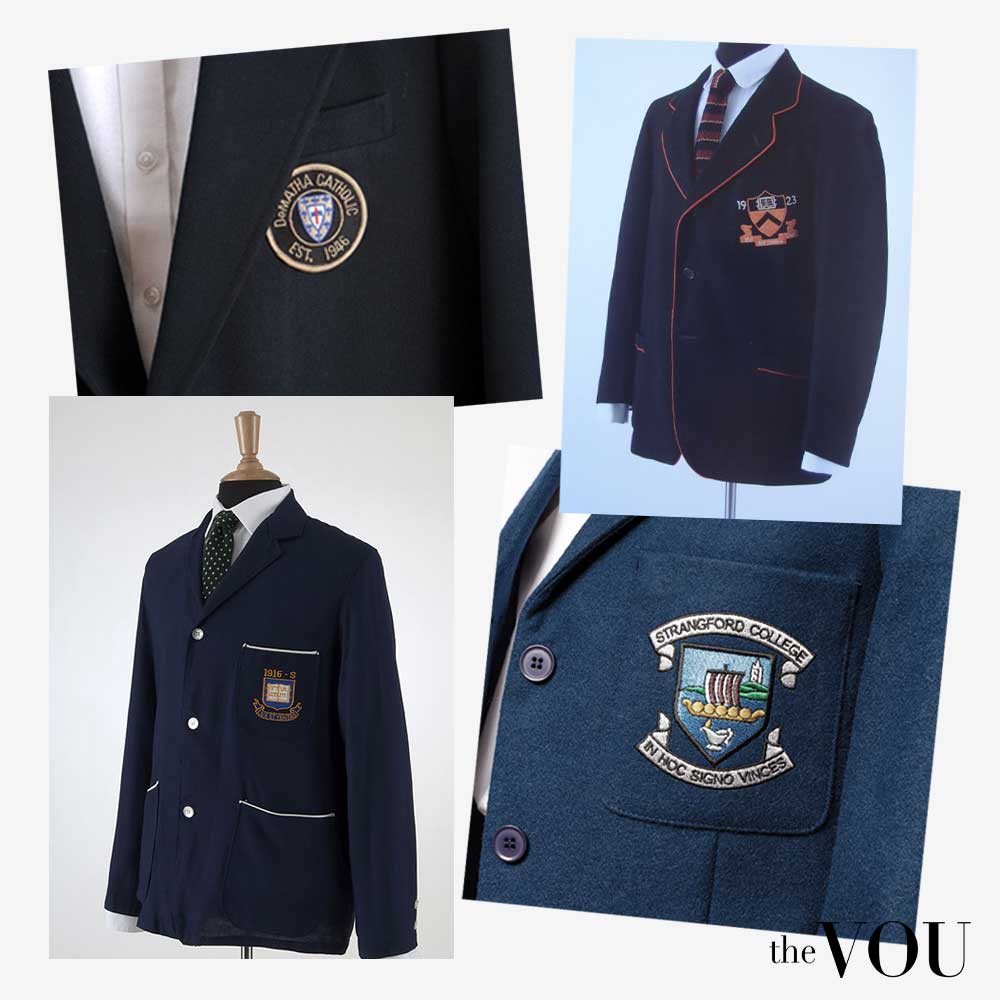
Some notable examples of organisations and clubs that traditionally use crested blazers include:
University of Oxford (Oxford, England) – The Oxford University crest features a blue shield with an open book and the Latin motto “Dominus Illuminatio Mea,” meaning “The Lord is my Light.”
University of Cambridge (Cambridge, England) – Cambridge University’s crest includes a red shield with a gold cross and four lions, symbolising strength and protection.
Harvard University (Cambridge, USA) – Harvard’s crest is elegant with a crimson shield, three open books, and the motto “Veritas,” meaning “Truth.”
Yale University (New Haven, USA) – Yale’s crest features a blue shield with an open book and the Hebrew phrase “Urim V’Tumim,” meaning “Light and Truth.”
Royal Yacht Squadron (Isle of Wight, England) – This prestigious club’s crest includes a white ensign with a St George’s cross, the Union Flag in the canton, and a crown.
Marylebone Cricket Club (MCC) (London, England) – Based at Lord’s Cricket Ground, the MCC has a simple yet iconic crest with the intertwined letters “MCC” in red and yellow.
Whatever their specific details, blazers are intended to be bright, “ablaze” with colour, as their name suggests.
The original blazer, made of red flannel, was created for members of the Lady Margaret Boating Club in Cambridge, England, who started the “blazer” trend, which saw the use of other colours like green and yellow.

The striped versions, boating or regatta blazers, are likewise quite bold. Even the standard navy blazer will attract attention if it has bright brass buttons.

Therefore, a man wearing a blazer ought to be somewhat extroverted or in a place where jackets are worn by everyone, such as in a nautical setting.
The Suit Jacket
A suit jacket is precisely that: the jacket belonging to a two—or three-part outfit, including matching pants and a waistcoat, which make up a complete suit.
Thus, a suit jacket always originates from a pairing that uses the same fabric for both (or all) pieces. In other words, being part of the ensemble is the essential defining feature of a suit jacket.
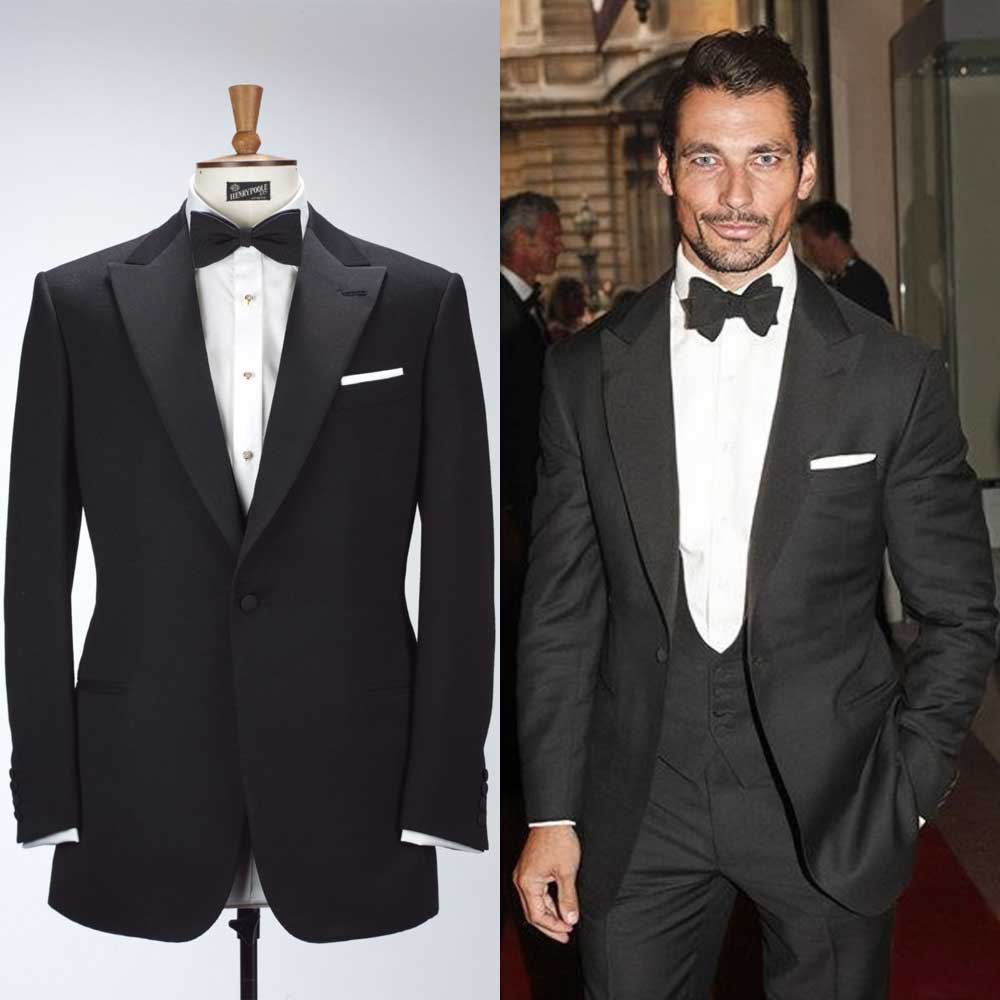
Of course, to use the Italian term, there’s nothing to stop someone from splitting up a suit in a style move known as “mix-and-match” or spezzato.
For example, you can wear the grey trousers from one suit with the navy jacket from another, injecting variety into your wardrobe.
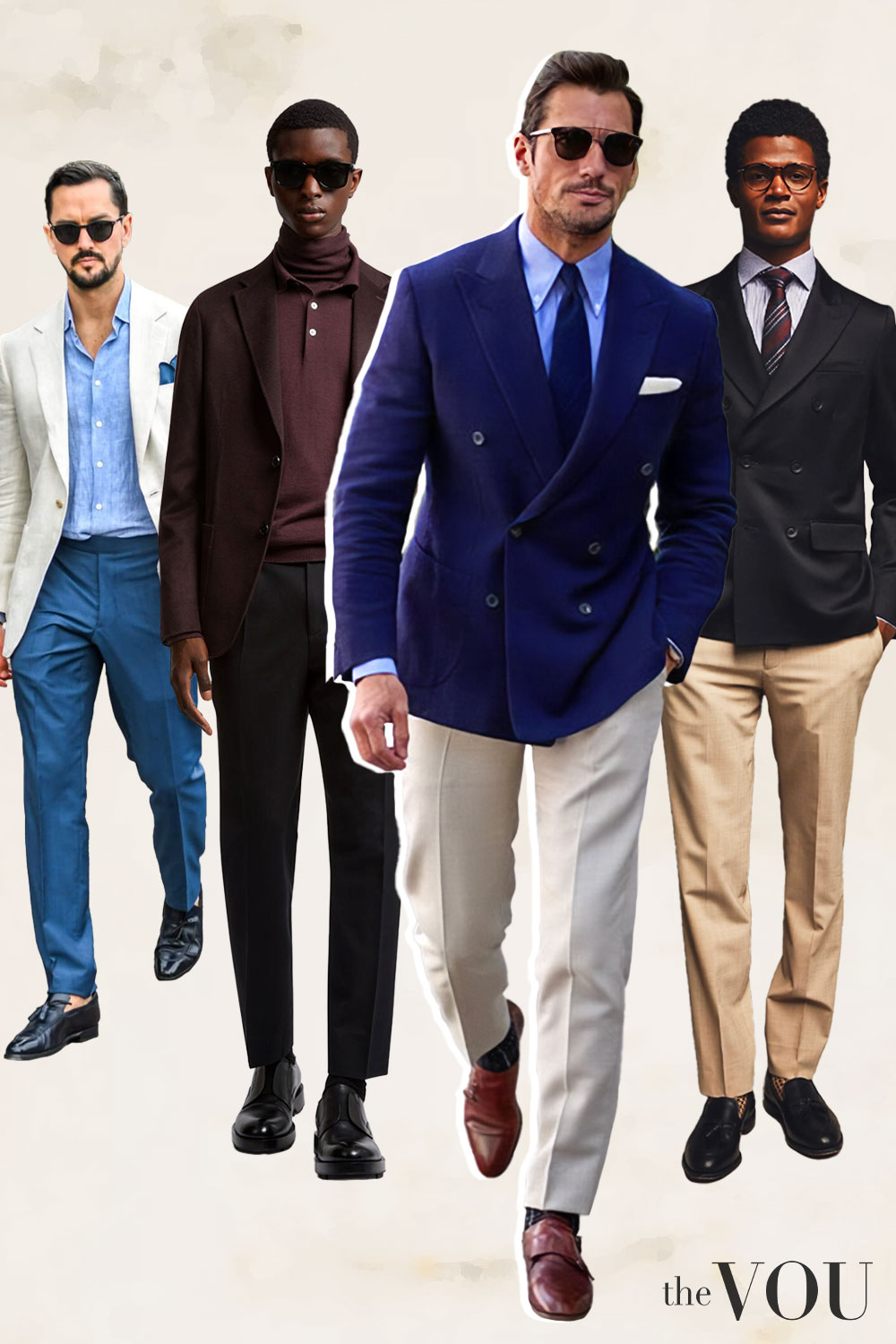
Yes, it blurs the lines of definition between suit jackets and sport coats by breaking up the original unity of a suit (spezzato means “broken”).
But let’s not get ahead of ourselves! Before we get to sports coats, know that certain common features of suit jackets will help you distinguish them visually from other jacket styles.
For one thing, a suit jacket is more formal, so suits are the default attire for business meetings, funerals, and other daytime events that require soberness and dignity.
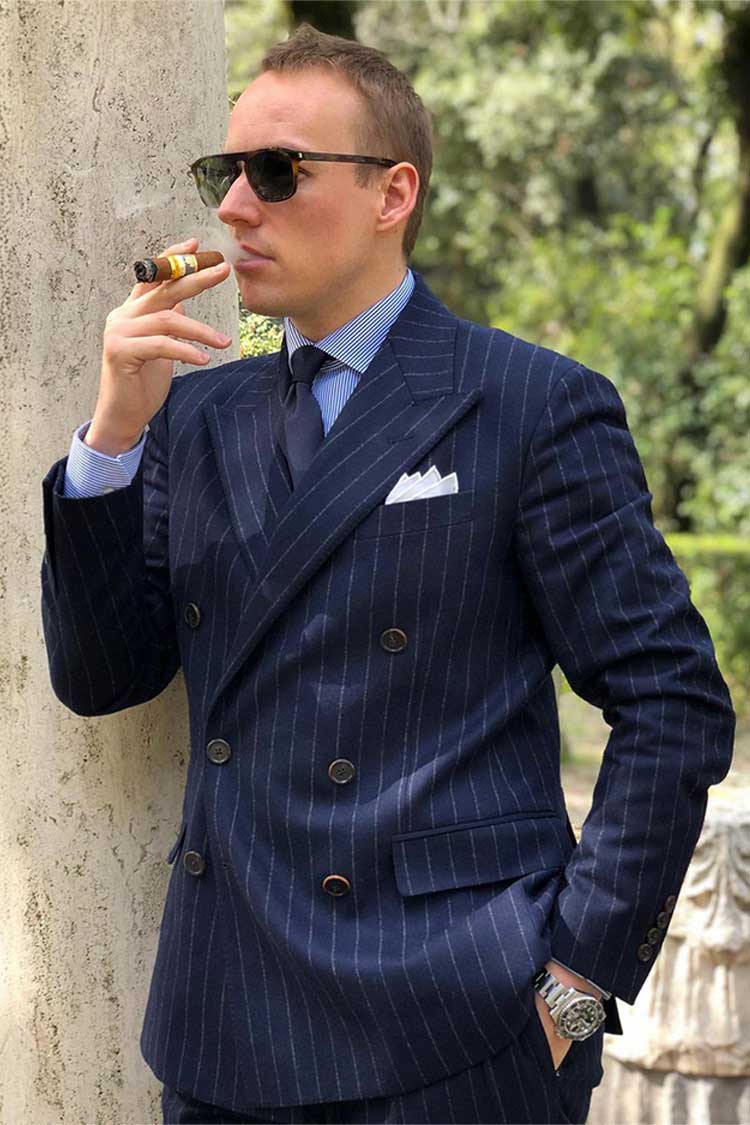
Most suitable for formal occasions and dress codes such as white tie and black tie, a suit jacket’s formality is reflected in its relative absence of pattern or texture and its more structured nature than a sport coat or blazer.
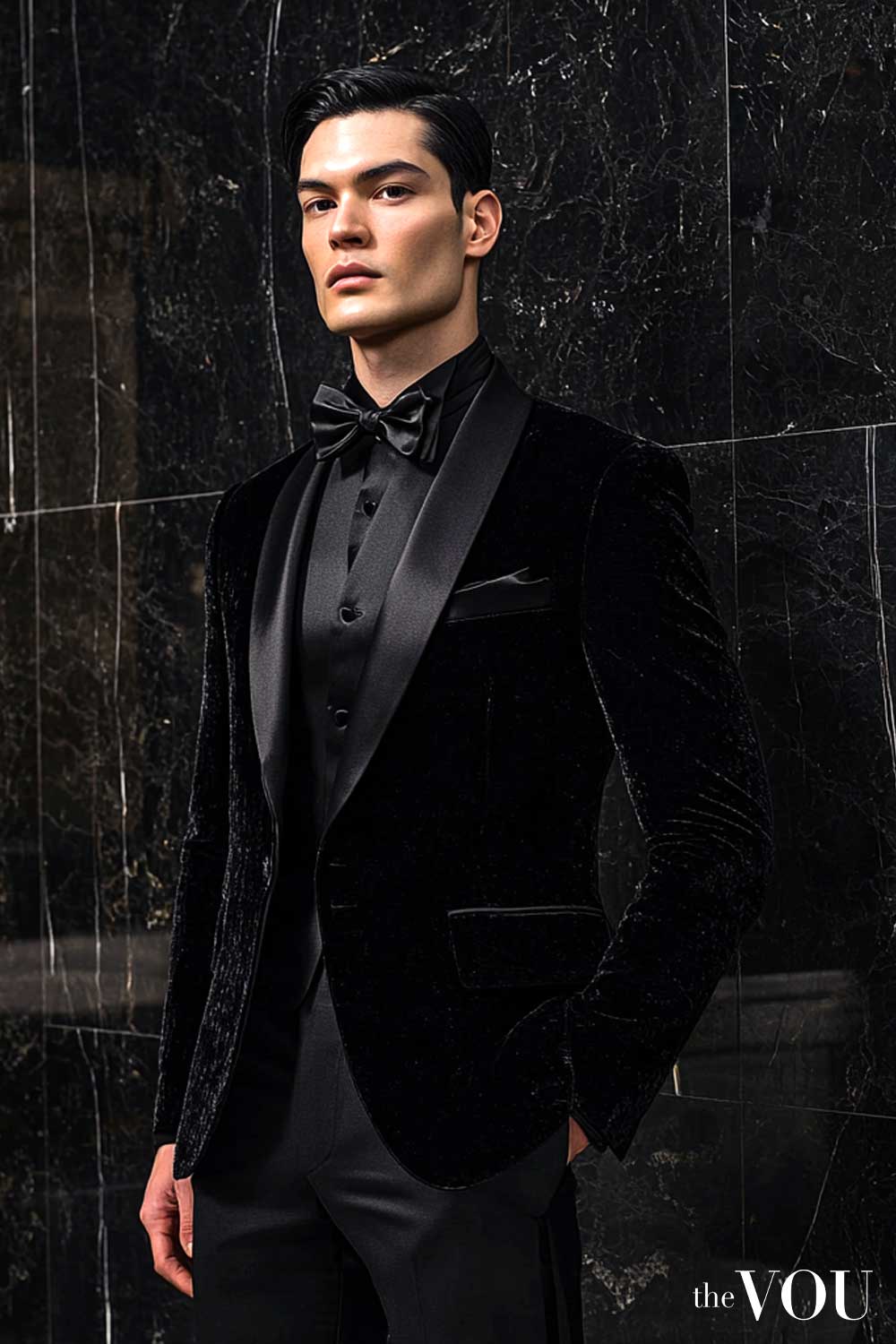
Most suits are made of smooth, worsted wool in conservative solid colours like charcoal grey or navy blue.
Suit Jacket Main Patterns
Only a few traditional patterns, such as glen check, windowpanes, chalk stripes, and pinstripes, are considered formal enough for a business suit.
Glen Check (or Glen Plaid)

This pattern features a mix of small and large black, grey, and white checks.
It consists of intersecting lines that create a crisscross pattern, often with a subtle overcheck of a contrasting colour.
The pattern can appear busy up close but reads as a solid from a distance.
Windowpane
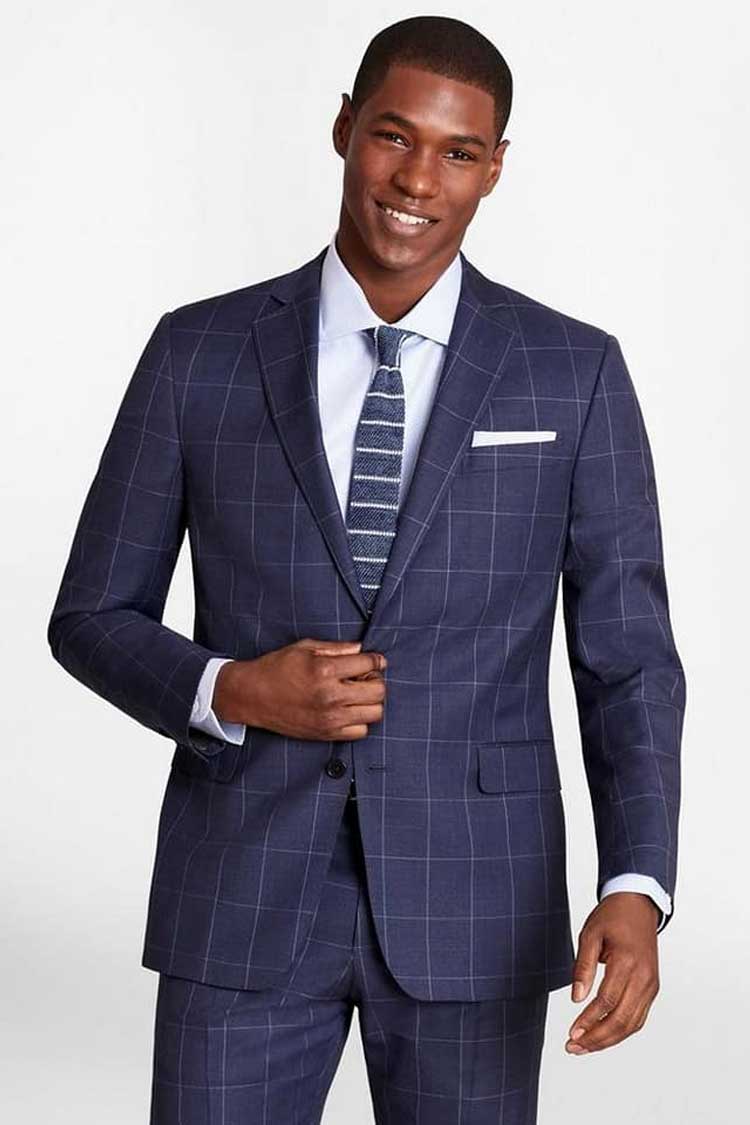
Windowpane patterns consist of large, evenly spaced squares formed by thin lines.
The lines are lighter or darker than the base fabric, creating a grid-like appearance.
This pattern is bolder and more visually striking, reminiscent of the panes of a window.
Chalk Stripes

Chalk stripes are vertical stripes that are thicker and have a softer, more diffuse appearance, resembling the marks made by chalk on a blackboard.
The stripes are spaced wider apart than pinstripes and are often found on flannel suits, giving them a more relaxed and textured look.
Pinstripes

Pinstripes are thin, white, or light-coloured vertical stripes evenly spaced to create a sharp, formal appearance.
Pinstripe suits are associated with business attire and convey a sense of professionalism and authority.
Suit Jacket’s Structure
Structure means a suit jacket tends to have more padding inside the shoulder area and, in some cases, more canvassing between the inside lining and the cloth.
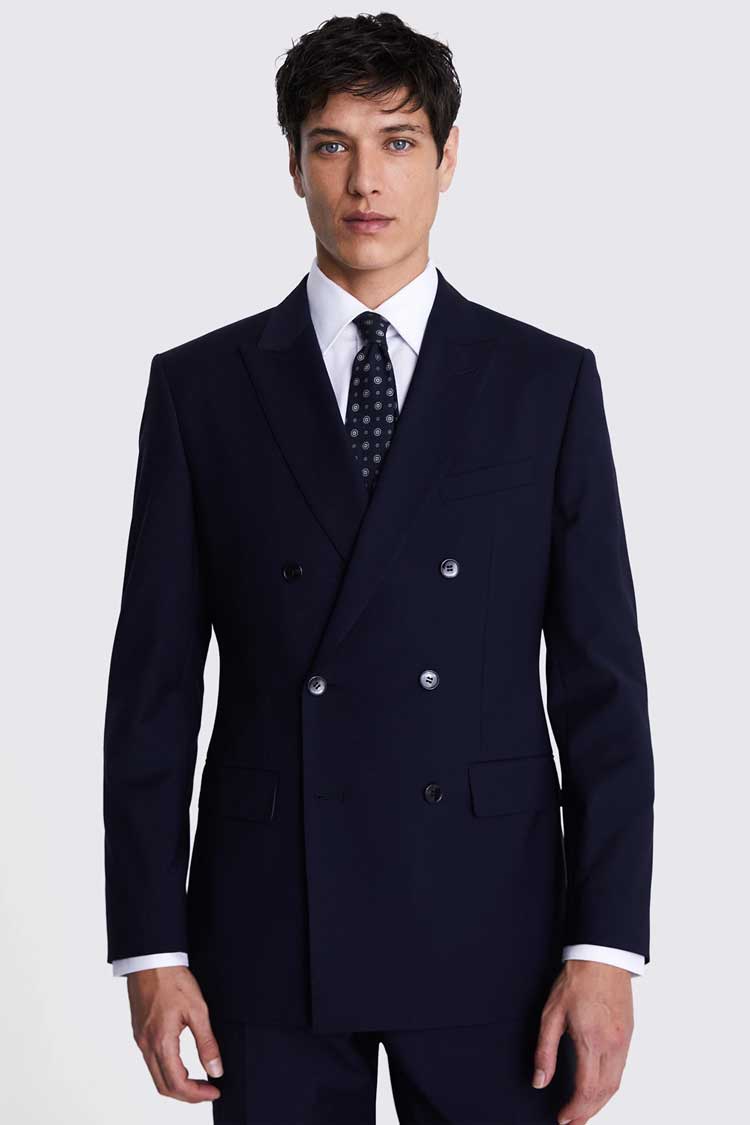
The formality of the structure, especially in a British-style suit, combined with standard suiting fabric, makes the suit jacket challenging to wear with different pants.
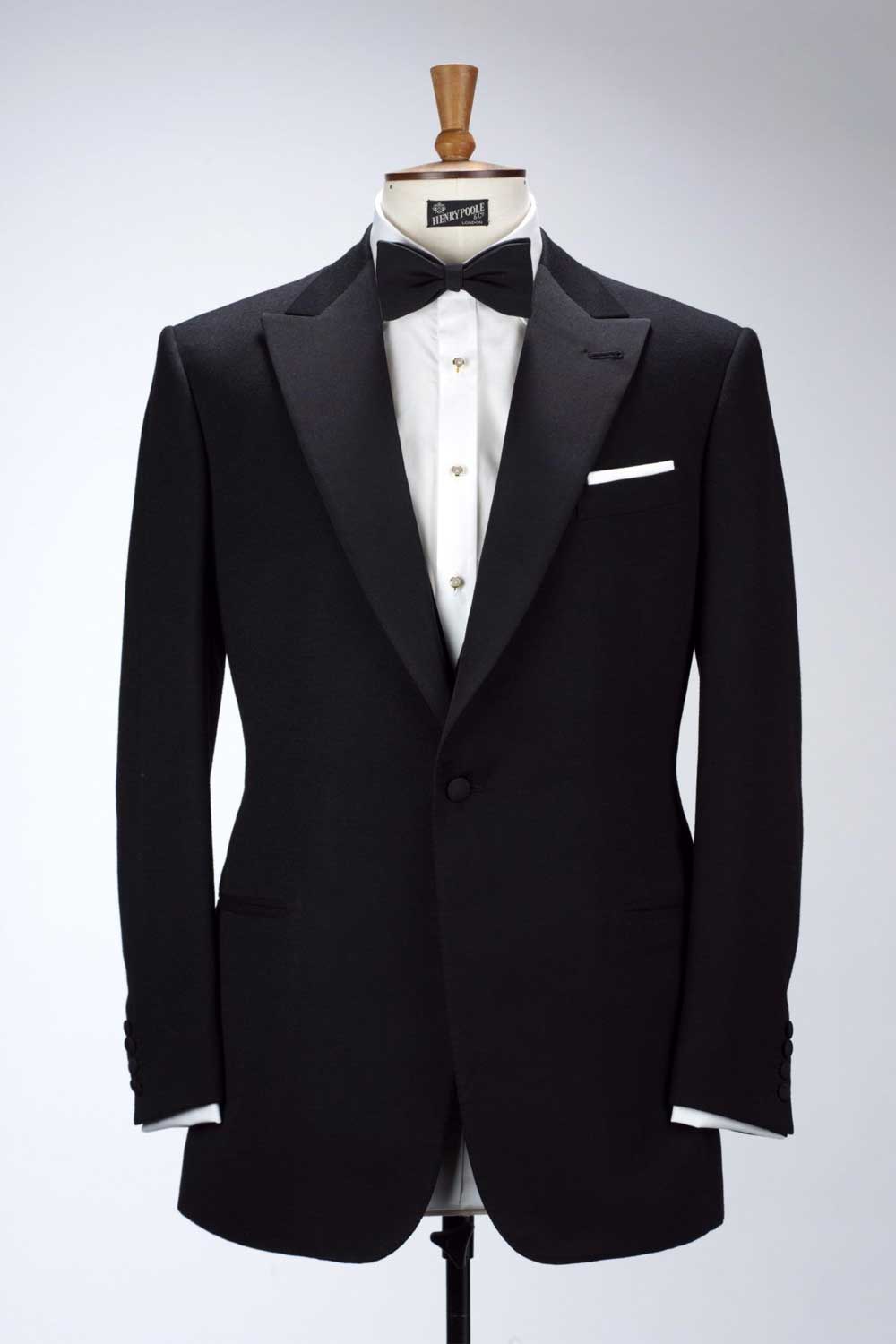
That’s because your upper body will appear more dressed up than your lower, looking like you’re wearing the orphaned top half of a suit.
Check out the guys wearing suit jackets with jeans at any upscale suburban mall on the weekend, and you’ll know exactly what we mean.
The problem with pairing suit jackets with non-suit trousers is that padded shoulders and worsted wool are formal features; they’re so associated with full suits and the power they project that they instinctively need to be corrected when divided.
There is a school of style that intentionally ignores this disconnect between top and bottom.
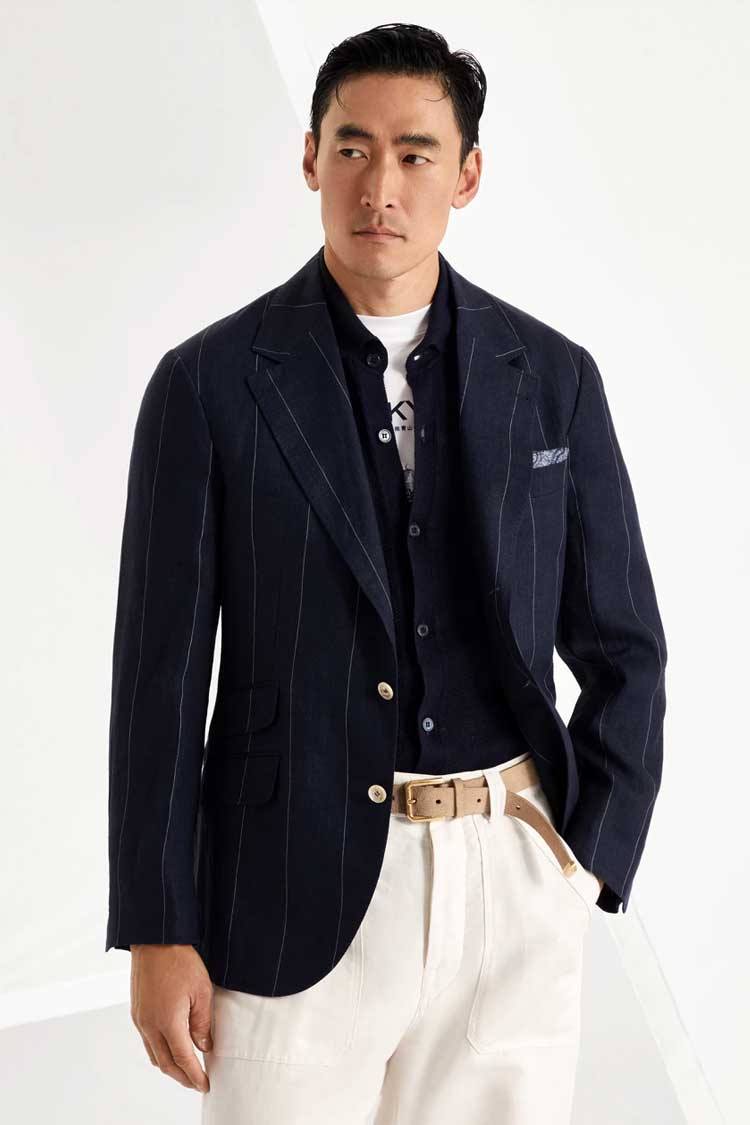
This school is practised by those who wear suit jackets with torn-up jeans, sweatpants, or shorts.
However, it is not a classic style, so we don’t recommend it to The VOU’s clients!
The Sport Coat
A sport coat is also known as an “odd jacket,” odd not in the sense of being weird–even though some sport coat patterns can be pretty strange–but in the sense of being different from the pants (which can also be called “odd trousers”).
Confusion can also arise here; look no further than someone who isn’t up to speed on the technicalities of menswear seeing your sport coat and saying: “Nice suit!” And while it doesn’t seem right, accept the compliment graciously without correcting the mistake.

A sports coat is the opposite of a suit jacket in several ways.
Where suit jackets are smooth and solid in colour, sport coats are made with textured weaves and fabrics and unique patterns, like a black-and-white houndstooth made in tweed fabric.
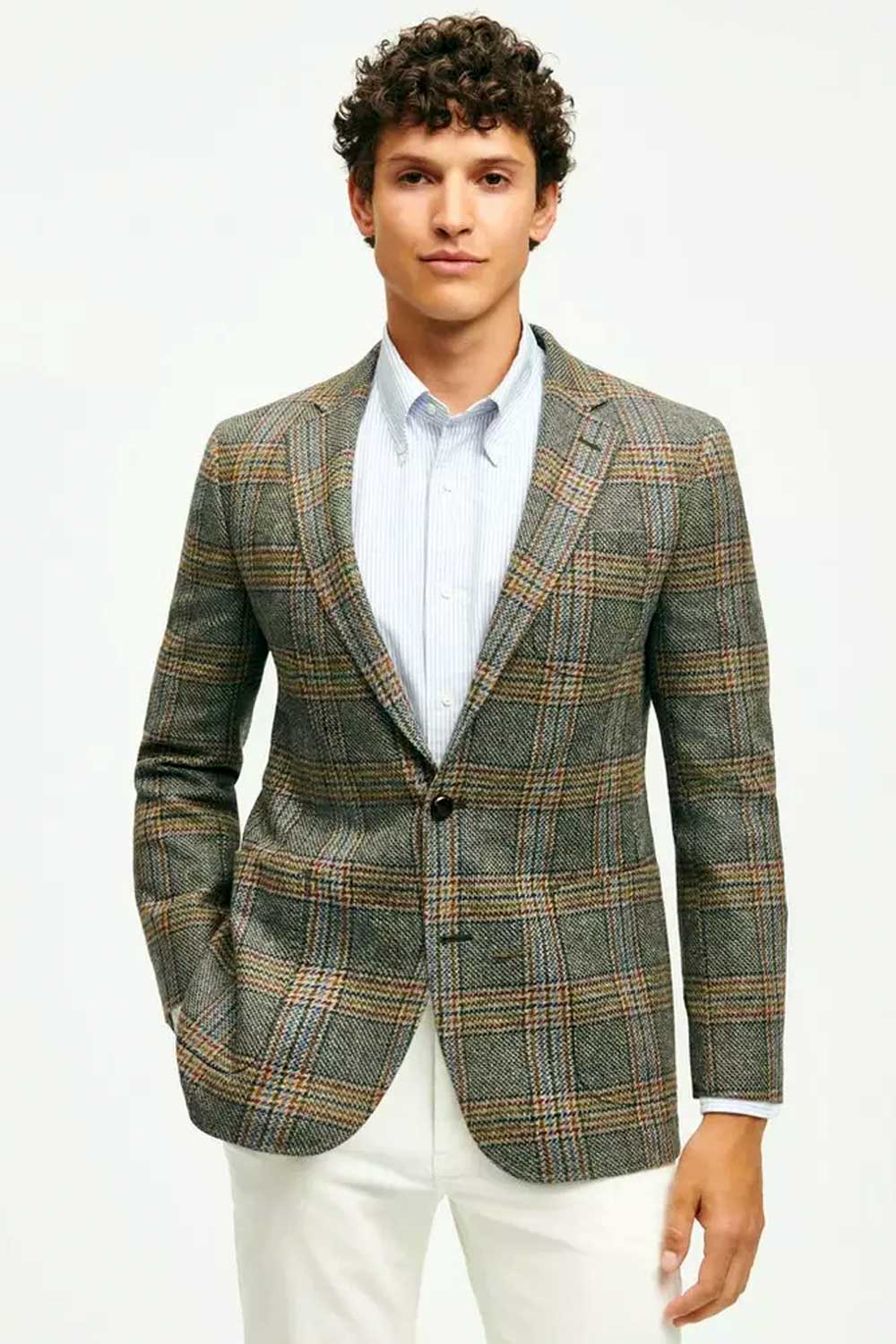
The texture and pattern are intended to make it explicitly clear that you are not wearing a divided suit and, on the other hand, to emphasise the casual nature of the sports coat.
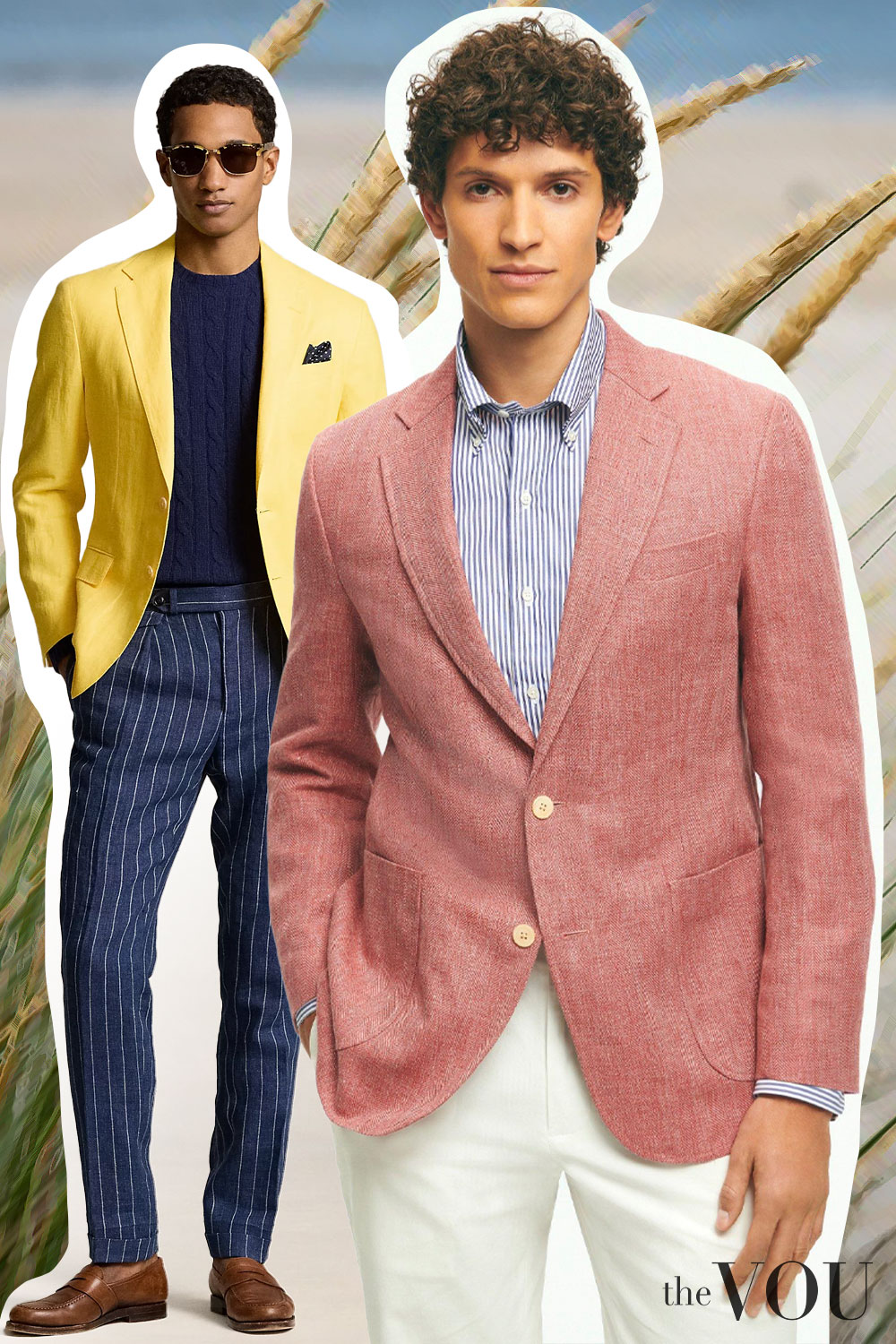
It can be helpful to consider the sport coat as having country origins, while a suit is best suited for city wear.
As the name suggests, these jackets were initially made for “sporting” in the British countryside, which meant gentlemanly leisure pursuits like shooting game birds.
Sport Coats by Activities
Sport coats were designed with specific activities in mind:
Hunting
Hunting sports coats are designed with durable fabrics like tweed to withstand the elements and rough terrain and feature shooting patches on the shoulders for added comfort and functionality.
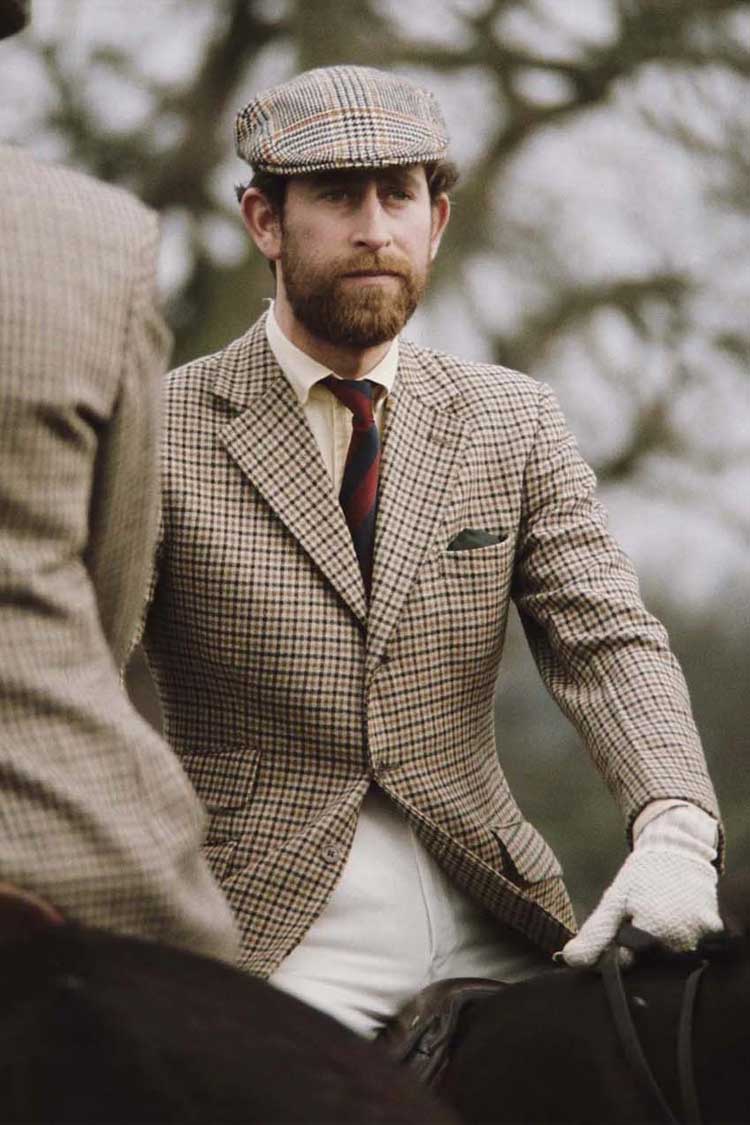
Fishing
Fishing sports coats are water-resistant and include practical features such as multiple pockets for carrying small tools, bait, and other fishing essentials.
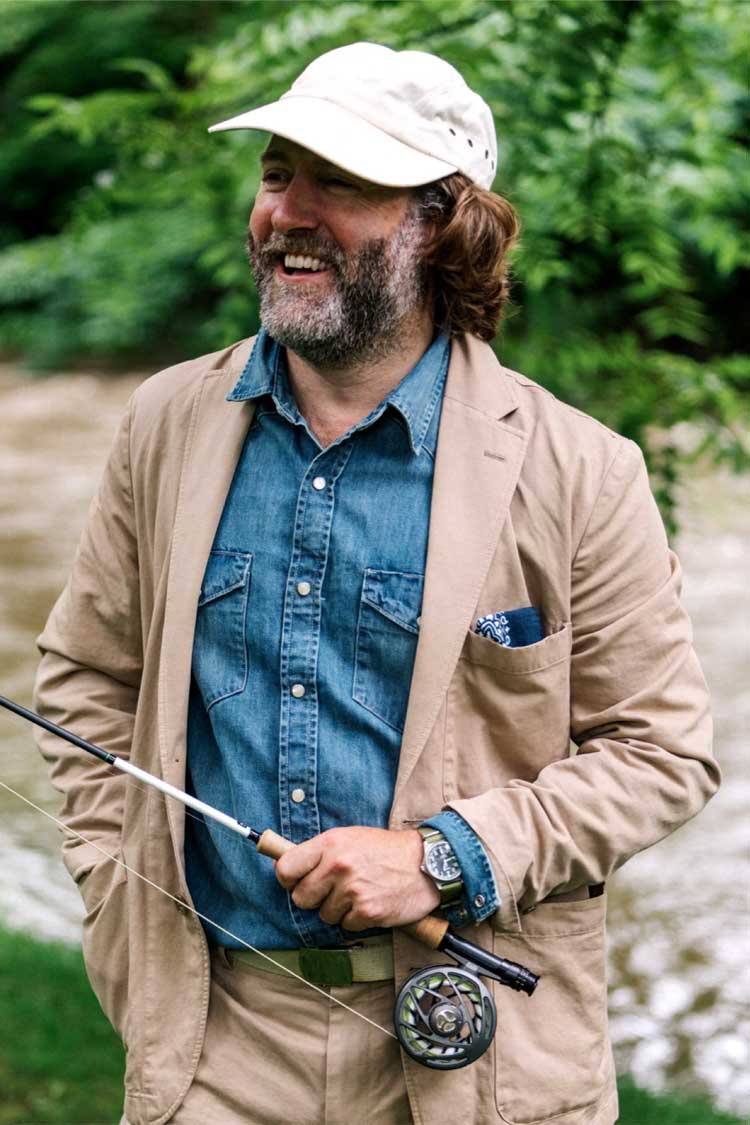
Shooting
Shooting jackets are tailored with room for movement and reinforced patches on the shoulders to cushion a gun’s recoil.
They sometimes include pleats and vents for ease of movement and extra pockets for ammunition and accessories.

Horseback Riding
Equestrian-style sport coats are made from durable, weather-resistant fabrics for protection and comfort.
They have a slightly longer cut and sometimes include a vented back to allow easier riding movement.
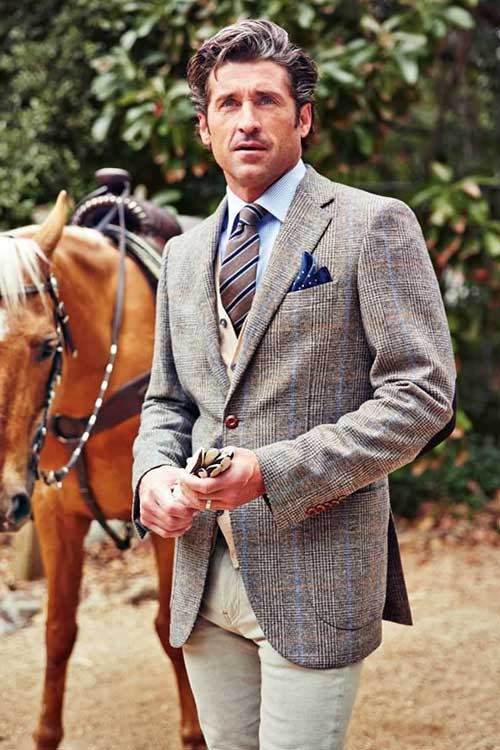
Golf
Golf jackets are lightweight, have a relaxed fit, and are made from breathable fabrics. These ensure comfort during play and allow a full range of motions, essential for swinging a golf club.

Sport Coats by Occasions
Ideally, sports coats are worn on informal occasions like weekends, parties, picnics, etc.
Of course, a sports coat is hardly considered casual today compared to the usual streetwear attire of a hoodie, jeans, sneakers, and T-shirt, but it is still less formal than a suit.
As evidence of this, a sports coat will usually lack the architectural structure of a suit jacket.
Natural shoulders (without padding) are standard, and summer sport coats are often shirt-like without any internal canvas or lining.
Yes, there are casually styled suits that have some of these features, but they are more abundant among sports coats.
Sport Coats Pockets
Interestingly, the casual aspect of the sports coat is also evident from its pockets.
While suits have flapped or jetted pockets, sport coats, which are relaxed in appearance, have patch pockets.
It could also include the breast pocket, which would be welted in a more formal garment rather than a patch.
You can also find suit-style pockets on sports coats, which are rarer and more incongruous.
Patch pockets are more casual than flap or jetted pockets for several reasons.
Historical Context
Historically, sport coats were designed for activities like hunting, fishing, and riding, where functionality was key.
Patch pockets provided easy access and extra storage for these activities, reinforcing their casual origins.
Formality of Other Pockets
Flap and jetted pockets are typically more integrated into the jacket’s design, often with hidden stitching.
Flap pockets have a cover that adds a touch of formality, while jetted pockets are the most formal due to their sleek, minimal appearance. The pocket opening is hidden in the seam.
Visual Weight
Patch pockets add visual weight to the jacket, breaking up the clean lines and creating a more relaxed look.
In contrast, flap and jetted pockets maintain the jacket’s sleek and uninterrupted lines, contributing to a more formal and polished appearance.
Construction and Appearance
Patch pockets are sewn directly onto the exterior of the sport coat, making them visibly distinct from the jacket’s body.
This visible stitching and external placement give them a more relaxed and less formal appearance than flap or jetted pockets’ more streamlined and hidden designs.
Functionality
Patch pockets are larger and more functional, designed for practical use rather than aesthetic purposes.
Material Differences – Blazers, Suit Jackets, Sport Coats
Certain fabrics are more commonly associated with blazers, suit jackets, and sport coats, reflecting different purposes and levels of formality:
| Blazers | Wool | a classic choice for blazers, offering durability, warmth, and a polished look. |
|---|---|---|
| Tweed | used for blazers to add texture and a slightly casual feel. | |
| Cotton | lightweight and breathable, suitable for warmer weather. | |
| Linen | It is ideal for summer due to its breathability, though it wrinkles easily, giving it a more relaxed appearance. | |
| Suit Jackets | Worsted | It is the most common suit fabric, loved for its smooth finish, durability, and versatility in different weights. |
| Wool Blends | mixed with synthetics for added durability and wrinkle resistance. | |
| Flannel | a softer, brushed wool, suitable for cooler weather, offering a more relaxed yet refined look. | |
| Mohair | a luxurious option that adds sheen and texture blended with wool. | |
| Linen | used for summer suits, offering a lightweight and breathable option. However, it’s less formal due to its tendency to wrinkle. | |
| Sport Coats | Tweed | a highly durable and rugged texture, making it ideal for outdoor activities. |
| Herringbone | a tweed type with a distinctive V-shaped pattern for extra texture and visual interest. | |
| Corduroy | a durable ribbed fabric that adds a casual and textured look, often used in cooler weather. | |
| Cotton | lightweight and versatile, suitable for a relaxed, casual style. | |
| Linen | great for warm weather, providing a breezy and casual appearance. |
Each type of jacket is tailored to its intended use, with fabric choices reflecting the need for durability, breathability, warmth, or formality.
There are apparent differences between suit jackets, blazers, and sport coats, and endless modern options featuring style hybrids.
There are casual suits with unstructured jackets like sports coats and blazers that fit the same way, reflecting the prevailing trend for more relaxed and less formal cuts.
Choosing and Styling Sport Coats
Here are some styling ideas for blazers, suit jackets, and sport coats based on different occasions:
Business Casual Blazer Look – Wear a navy blue blazer with khaki chinos, a light blue button-up shirt, and brown leather loafers.
Smart Casual Blazer Look – Combine a green or burgundy blazer with dark-wash jeans, a white Oxford shirt, and suede derby shoes.
Cocktail Attire Blazer Look – Dress up a navy blazer with grey wool trousers, a white dress shirt, a patterned tie, and black oxford shoes.
Business Formal Suit Look – Wear a charcoal grey suit with a white dress shirt, a red silk tie, and black Oxford shoes.
Wedding Suit Look – Opt for a navy blue suit with a light blue dress shirt, a floral tie, and brown leather brogue shoes.
Interviews Suit Look – Choose a dark grey suit with a white dress shirt, a subtly patterned tie, and black derby shoes.
Casual Sports Coat Look – Pair a brown tweed sport coat with blue jeans, a checkered button-up shirt, and brown chukka boots.
Business Casual Sports Coat Look – Combine a navy herringbone sport coat with beige chinos, a light pink Oxford shirt, and dark brown penny loafers.
Semi-Formal Sports Coat Look – Wear a dark blue sports coat with grey flannel trousers, a white dress shirt, a patterned pocket square, and black monk strap shoes.
On occasions where it would be inappropriate to wear a sports coat or blazer instead of a suit jacket, a full suit is typically required for formal events such as black-tie affairs, galas, or highly conservative business settings.
In such situations, a formal suit jacket must adhere to the dress code and show respect for the event or occasion.
Additionally, certain professions, such as law or finance, may have stricter dress codes that require suit jackets for daily work attire.
In these cases, wearing a sports coat or blazer instead of a suit jacket could be considered too casual and potentially inappropriate for the work environment.
However, a well-tailored blazer or sports coat can be an excellent alternative to a suit jacket for most other occasions, such as business casual events, smart casual gatherings, or semi-formal occasions.
Conclusion
Understanding the key differences between blazers, suit jackets, and sport coats is essential for gentlemen looking to dress with style and purpose.
While these garments share similarities, their unique histories, designs, and intended uses set them apart.
By appreciating the nuances of each type of jacket, you can confidently navigate the world of men’s fashion and select the perfect piece for any occasion.
Whether you opt for the versatility of a blazer, the formality of a suit jacket, or the relaxed sophistication of a sport coat, knowing the distinctions between these classic garments will ensure you always present yourself with elegance and refinement.
Investing in quality blazers, suit jackets, and sports coats is a wise decision to quickly improve your appearance and make a positive impression.
By choosing the right fabric, fit, and style for your body type and lifestyle, you can create a timeless and versatile capsule wardrobe that will serve you well for years.
So, embrace the power of a well-tailored jacket and step out into the world with confidence, knowing that you have the knowledge and style to stand out from the crowd and leave a lasting impression wherever you go.
Take the First Step With The VOU’s Styling Quizzes
Start your style journey with our free resources. First, take our Face Shape Quiz to confirm your face shape and receive initial styling guidance.
Then, discover your most flattering colours with our Seasonal Colour Analysis Quiz.
Learn which garment styles suit you best through our Body Shape Quiz, and find your ideal personal style with our Fashion Style Quiz.
Transform Your Image with The VOU’s Professional Guidance
For comprehensive image development that goes beyond hat selection, The VOU offers expert styling services to ensure your complete look projects success and sophistication.
Our Professional Face Shape Analysis package provides you with a scientific analysis of your exact face shape, personalised hairstyle recommendations, customised facial hair styling guide, expert eyewear selection guidance, and detailed grooming recommendations tailored to your unique features.
For the most comprehensive transformation, consider our Complete Image Transformation Package.
This premium service includes our Professional Face Shape Analysis, Seasonal Colour Analysis, Body Shape Analysis, Fashion Style Analysis, Wardrobe Curation Guide, and Personal Brand Development.
Through this complete package, you’ll develop a cohesive style that communicates success and sophistication across all aspects of your appearance.
After years of managing hundreds of fashion brands from London's office of a global retailer, Mandy has ventured into freelancing. Connected with several fashion retailers and media platforms in the US, Australia, and the UK, Mandy uses her expertise to consult for emerging fashion brands create top-notch content as an editorial strategist for several online publications.
With years of expertise in high-end fashion collabs and a PhD in Sustainable Fashion, Ru specialises in eco-luxe wardrobes for the modern gentleman seeking understated refinement.
With over twenty years of front-row fashion and styling events, collabs with haute-couture houses, and a PhD in Luxury Fashion, Laurenti is an expert in crafting personalised looks that depict old-money sophistication.


